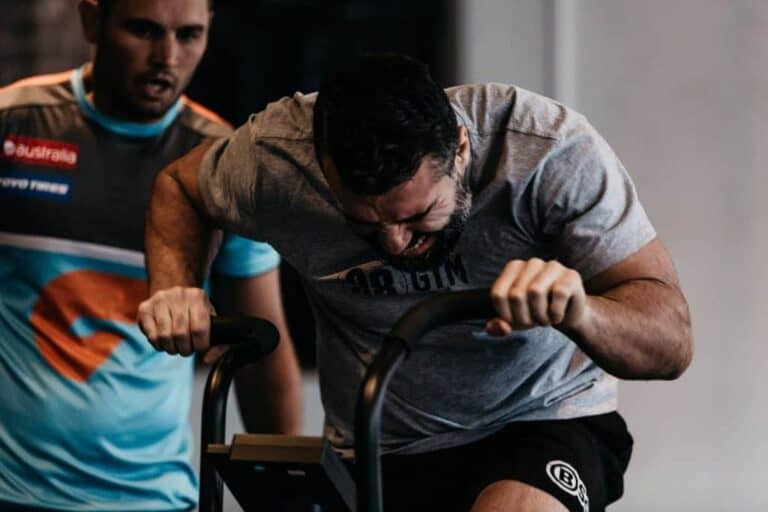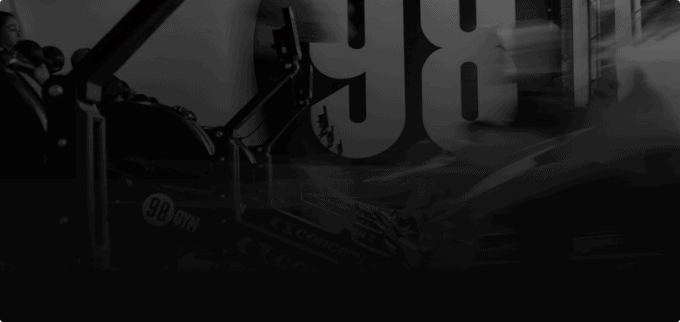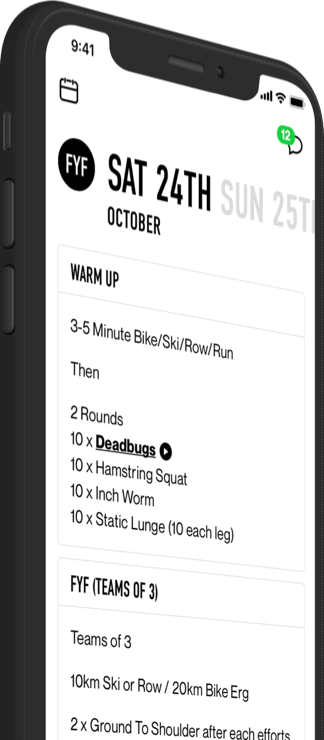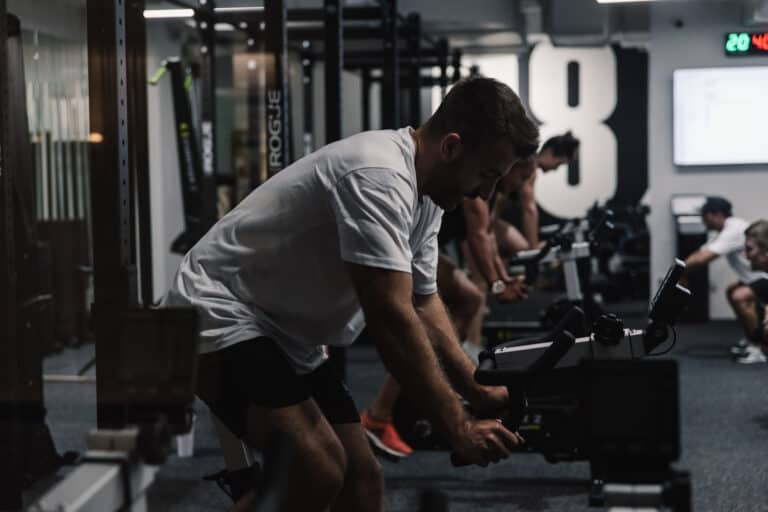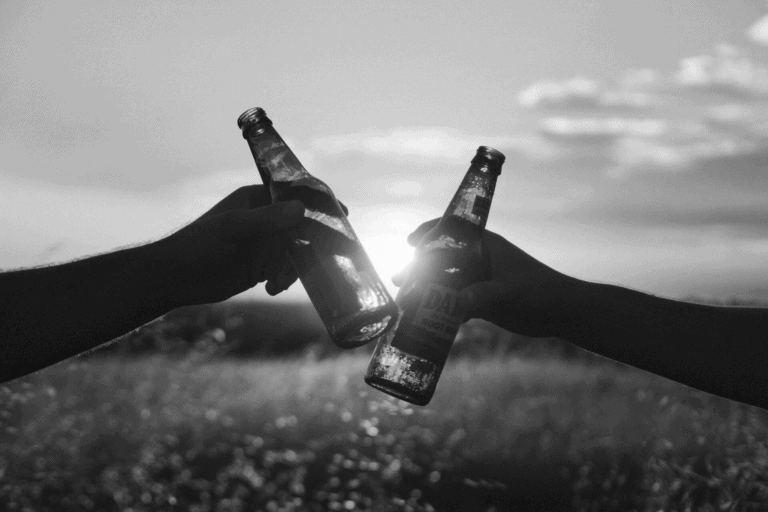Coping and Conquering the Escalation of Stress
I thought I was tough. I had completed US Army Infantry Basic Training, Airborne School, and the 2-year long Special Forces Qualification course. I was a Green Beret who had been on an A-Team for almost a year. I was 6’2” and 230 pounds, lean, muscular and thought I had an edge. I was good with a gun and was the senior communications sergeant on my team. Yet there I was, my first night in Iraq, standing in the hallway of a darkened Special Forces Operations room, and felt a strange uncertainty. I had a lump in my throat. I felt a tightness in my abdominal muscles. My feet felt heavy. We were about to get into our gun trucks and leave the base for a “route familiarization tour”. This would be my very first combat patrol, into Al Qaeda territory. Honestly, for the first time in my life, I felt it. It was suddenly depriving me of my self-confidence. Fear. I was scared.
It was then when a senior 18 Delta medic from the outgoing team opened the outside door and came barreling in, with his headlamp on, and saw me in his way. “What’s up man, I’m Mike”, he lightheartedly said, while adjusting his lamp so it was out of my eyes. We exchanged a few words, and he noticed something about my demeanor, my body language. “First deployment man?” he asked. “Yeah man,” I said. “Hey dude” he followed up, “You’re nervous, I know (understatement) but what you have to know is that you’re better trained than those fuckers out there, you have better equipment, crazy technology and God’s on your side”. He read my body language. Saw my lack of self-confidence, and very subtlety, kicked me in the ass, and gave me an infusion of suck-it-up sauce.
Mental Toughness (MT) is an often talked about, elusive, intangible and sometimes misunderstood character trait. Coaches and corporations throw the term around as if MT is a universally understood and equally applied concept. In today’s world, where cultures gravitate towards immediate gratification, extreme comfortability, risk-aversion and risk awareness, blame gaming, and overall sensitivity, the concept of MT, how to identify it, how to bolster it and nourish it, needs to be broken down and identified.
One definition of MT from a sport’s perspective:
Mental Toughness is “Having the natural or developed psychological edge that enables you to generally cope better than your opponents with the many demands (competition, training, and lifestyle) that sport places on a performer; specifically, be more consistent and better than your opponents in remaining determined, focused, confident, and in control under pressure”. (Jones, Hanton, & Connaughton, 2002, p. 209).
OK, but what about degrees of mental toughness? How will a stoic, confident coach or CEO respond to an outside stressor they are not prepared for? From a personal standpoint, I had been the anchor leg for my high school mile relay, earned a college scholarship playing football, overcome various injuries, had a burgeoning career as a strength coach, had motivated young people, thrived during the aforementioned Special Forces course, and thought I had a grasp on mental toughness. Yet there I was, 36 years of age, standing there in Iraq facing a completely different level of fear, and grasping how to rise up and conquer it.
It is important to know this about MT. It is a trait to be trained, fostered, reviewed, and tested, because:
One does not possess, or OWN mental toughness. One can only exhibit it. MT is fluid, and comes and goes based on environment and occurrences. There are different levels of MT based on outside stimuli. MT is a learned character trait that has to be cultivated and maintained through exposure to stressors. A football team that exhibits MT, and pulls out a historic win, can fall the next week to a lesser opponent. Soldiers who previously performed bravely one day may find themselves cowering under withering fire the next. History is rich with the examples of this: Why does this happen? I will be discussing barriers, or personality traits that inhibit MT, behavioral manifestations that exhibit Mental Weakness, and finally, a checklist of personality traits that exhibit Mental Toughness. One may ask, “If it is so hard to define and pin down exactly what MT is, how can you define these traits? Through extensive research, one can ascertain specific behavioral attributes of people who have thrived under pressure and crisis.
BARRIERS TO MT
MT is very difficult to quantify unless an individual or group has accomplished something or endured a crisis event. How can one prepare for various stressors, both planned and structured (like an MMA bout, a football game, or a pole vault for a personal record) or unplanned and dangerous, like being ambushed by Taliban forces, or rescuing children from a submerged car? From experience, and the limited research out there, one can trace the following environmental barriers and link them to hindering the development of MT. If you are curious how you will respond to a stress situation, look at these barriers to MT. Do you exhibit any or all of these traits? If so, you may likely wilt under pressure.
- COMPLACENCY (Webster definition: “A sense of self-satisfaction especially when accompanied by unawareness of actual dangers or deficiencies.” I would argue that complacency is the biggest obstacle for those wanting to conquer and achieve a consistent state of MT
- MINIMAL EXPOSURE TO RISK, LACK OF INDEPENDENCE OR CONFIDENCE DEVELOPMENT ACTIVITIES. Self-confidence/assuredness is critical in displaying MT.
- DWELLING IN COMFORT ZONES, ALWAYS SEEKING A RELAXED STATE OF WELL BEING. Someone that is constantly dwelling in a relaxed, low stress environment is less likely to perform under any level of pressure.
- LACKING GOALS, VISION, OR PLANNING, AND/OR TRAINING.
- OVERWHELMING STIMULI. (An unaccustomed level of stress causing one to lose their coping mechanisms).
Over the years, researchers and authors have attempted to identify and measure MT. Both the Psychological Performance Inventory (Golby, Sheard, & Van Wersch 1986) and Duckworth’s “Grit Scale” (Grit: The Power of Passion and Perseverance, 2016) use a questionnaire to establish a level of MT or a similar characterization known as “Grit”. The Filipino researcher Jesus Datu called into question the ability to measure or “capture” the level of Grit using a questionnaire. Can you even effectively measure MT, or “Grit” prior to an actual real life test? Would the ultimate test of MT be how one responds to a high stress situation? Even though it is not popular among academics, I will argue that the most legitimate measure of MT is through Anecdotal Evidence, through after action reports, or from reliable witnesses. As we dive into some actual occurrences, consider these following physical and mental manifestations of mental weakness. Which ones show up?
MANIFESTATIONS OF MENTAL WEAKNESS
- QUITTING, SHUTTING DOWN UNDER STRESS
- PANICS UNDER DURESS
- CHRONIC COMPLAINING, “NEGATIVE SPEAK” DWELLS ON NEGATIVITY
- SHOWING FRUSTRATION THROUGH THEIR BODY LANGUAGE, OR OVERALL DISPLAY OF RESIGNATION
- LACK OF CONFIDENCE
- LACK OF COMPETITIVENESS
- SEEKS OUT AND MAKES EXCUSES FOR FAILING
Panic and Flight 235
Captain Liao Jian-Zongwas the pilot of TransAsia flight 235 on February 4, 2015. Shortly after takeoff in Taiwan, one of the two main engines lost power. Among the last transmissions heard from the cockpit were from Zong, as he said “Wow, pulled back the wrong side throttle”. In all likelihood, Zong meant to give the functioning engine more throttle, and instead rapidly decreased throttle. The result of this grave error was the crashing of the plane and 43 lives lost, including his own and 2 other pilots. A review of Zong’s records found that he had failed simulator training in 2014, and successfully re-tested and passed. However, prior notes of his performance recorded his lack of confidence during applied stress, and a history of incomplete pre-flight checks. The Captain recorded over 4000 flight hours and was a pilot in the Thai Air Force. At some point of his life, he had to have exhibited concentration under stress, and MT. So at the most critical moment of his life, why did he fail? Did his training not expose him to the risk of immediate engine failure? Was he overwhelmed with the stimuli caused by the emergency?
“For 42 years I’ve been making small regular deposits in this bank of experience, education, and training. On January 15 the balance was sufficient so I could make a very large withdrawal.”
Chesley Sullenberger
Let us make a quick comparison between Transasia flight 235, where one engine failed on takeoff, and US Airways Flight 1549, which lost both engines at an altitude of only 3,000 feet after flying through a flock of geese. The pilot of flight 1549, Chelsey Sullenberger, performed his duties as a pilot with a calm demeanor, fought off panic, and processed through his options of how to land the plane. He and his co-pilot, Jeff Skiles, quickly ran through their Quick Reference Handbook and tried in vain to restart the engines. This happened in the course of around 20 seconds after the bird strike. Within one minute, “Sully” had communicated with air traffic controllers from Newark and La Guardia, and made the decision, based on plane altitude and rate of descent, that the best chance to save as many lives as possible was to ditch in the Hudson River. While Sully guided the plane towards the river, Skiles set the flaps correctly and instructed the flight attendants to prep the passengers for an emergency water landing. Both pilots rapidly problem solved, multi-tasked and performed the first casualty-free water landing in modern aviation history. All 155 souls on board survived. How were they able to do this?
They were highly experienced pilots. Sullenberger had flown gliders and the F-4 Phantom fighter jet in the U.S. Air Force. He had accumulated over 20,000 flight hours before the incident. Skiles started flying planes at the age of 16, and had accumulated over 15,000 flight hours prior to the incident. They were overly prepared. Sully had an extensive resume in aviation resource management; he had served on the boards of previous accident investigations, and had studied the psychology of flight crews during crisis. Due to the competitive market for commercial pilots in the United States, not only had both pilots logged thousands hours of actual flight time, they both had retained numerous certifications and simulator training on the Airbus 320. (Not all countries in the world can claim that level of experience with their pilots.) Even though they both felt an impending sense of doom, they performed as a team and quickly narrowed down their choices, controlled their emotions, communicated calmly, and most importantly, they avoided panic. (Swopes, Brian R. “This Day in Aviation” 2018)
The Power of Complaining
The Special Forces Qualification Course was quite challenging and daunting for me; mainly it was due to my age (I entered at 33 YOA after having a few orthopedic surgeries from college football). After leaving my nine-year career in the field of strength and conditioning, it was also a daily grind adjusting to the strict structure and demands of Army Special Operations training. Since it took the fiber of my being to matriculate through the course and survive, I became acutely aware of those around me. The emotional and physical toll it took on many young men in my class was fascinating. Around 75% of those fit youngsters who started the course did not finish for a host of reasons.
From the onset of basic training, airborne, and on through selection, complaining was the most common theme of any conversation. In an environment designed to create mental toughness in America’s elite fighting force, you could complain about so many things. The food? When you could eat, it sucked. The sleep deprivation took its toll on everyone. The rucksack was a 55-pound tick that sucked the life out of you. Blisters were all over your feet. The ruck runs, the distance running, pushups, the punishment bear crawling were a constant grinder. Unlike many other Special Operations selection courses, you would find yourself alone, trying to find a 10-digit grid point involving a 6-mile trek through swamps and brush. Those days placed the candidate versus frustration and exhaustion every minute of the way. The cramps and the dehydration could spell disaster. The classes and the power points would create a mental struggle to stay awake. Then there were the incompetent bastards around you, who you knew were not going to make it. Complaining ran amuck, and if you were hanging around a group of complainers, you could easily find yourself on the truck full of quitters heading back to Fort Bragg. Why is that? BECAUSE COMPLAINING DEVALUES THE GOAL. Whatever situation you find yourself in, survival in the Alaskan wilderness, trying to win some games to maintain a career, or trying to complete the fire academy, there is a goal at the end. DO NOT DEVALUE THE GOAL.
The power of complaining broadsided us during the second week of selection, during land navigation training. In preparation for our 11-hour solo land navigation test, we performed several practice iterations. Camp Mackall was experiencing some nasty winter weather, as we trudged through thigh deep snow, with 20-degree temperature, wet socks, and no possible way to get warm. I had just finished my last required point, and it was the coldest experience of my life. I was miserable; my teeth were chattering and I was soaking wet from the snow. After waiting for an hour, two other candidates and I caught a ride in the back of a suburban to our bivouac site. We had a small fire, with around 150 candidates taking turns huddling around it, dreading the overnight stay in the elements. A cadre member approached us and told us to make our poncho tents, and eat an MRE. We begrudgingly began pulling out or ponchos, stretching bungee cords to trees, scraping snow away in the hopes of finding a pine needle foundation, and generally seeking a way to find some comfort.
20 yards away from us was the rudimentary “quitters corral”, an area designated for those who had experienced enough, and quit the course. The “corral”, constructed of engineering tape wrapped around four trees, made a small square to segregate them away from us.
Our moral was tanking. You could hear a cacophony of grumbling, complaining, and shared misery. That is when it happened. A white Chevy pickup truck rolled up, with two candidates in the back. One heaved his rucksack out of the truck bed, slammed down the tailgate and jumped out. “I’m done with this shit,” he said. This staff sergeant was livid. “I am a freaking war veteran and this is all bullshit”. “You guys ain’t training me to do anything that I haven’t already done”. “Get me the hell out of here, this chickenshit course”. For that moment, all attention focused on him and his tantrum. Four candidates agreed with him, as they lifted and dragged their rucksacks into the quitter’s coral. One offered the angry staff sergeant a cigarette, and he took it. We continued to build our poncho tents, and arrange our sleeping bags, until about ten minutes passed. That is when our Master Sergeant Cadre called us up, and notified us that we were going back to Camp Mackall and our barracks. “You will have hot chow from 06:00 to 08:00”.
The pissed off Staff Sergeant, the war veteran? He was a plant. The mind game worked, and four more candidates quit the course over it. Remember; do not devalue the goal.
The Rest of the Story
MT Checklist and Coping with Stress Escalation
“OK Captain, if we hang a right, we have Little House on the Prairie, but if we hang a left we have Black Hawk Down”. We had just exited our forward operating base, and came to an intersection of a road heavily pock marked from IED’s. The outgoing team sergeant had been there around Baghdad for 11 months, and was issuing a tongue-in-cheek warning to my Captain. They had been in numerous gunfights, had lost a mechanic to a non-fatal gunshot wound, and were grizzled and cynical from the combat. Captain “G”, who was on his second deployment to Iraq, clicked on his push-to-talk button on his radio, and with a hint of sarcasm drawled, “Uh, let’s go ahead and hang a Louie”.
MENTAL TOUGHNESS CHECKLIST
- YOU PERSEVERE-You Work through frustration, and focus on a chosen task until it is completed
- YOU AVOID PANIC. You display a calm demeanor under escalating levels of stress
- YOU CAN FOCUS UNDER PRESSURE. You make correct, critical decisions when stress suddenly strikes.
- YOU EVOKE SELF-CONFIDENCE-You show masterful self-assuredness under stress and calm others.
- YOU ARE ULTRA-COMPETITIVE– You see competition in most activities and interactions.
- YOU HAVE A REGIMENTED LIFE- You eagerly value training and preparation.
- YOU HAVE A PLAN AND A MISSION- You have a vision, both short term and long term in life.
- YOU CAN PUSH THROUGH PAIN AND DISCOMFORT-You are a role model for toughness.
- YOU CAN WORK THROUGH FRUSTRATION-You can focus and problem-solve.
After the captain said, “Hang a Louie” I felt a strange combination of dread and excitement. The .50 Cal. Gunner, a senior Special Forces Engineer, laughed as he looked down at me. He said, “Hey man, you’re going to get your CIB (Combat Infantrymen’s Badge) in about 5 minutes”. We drove wildly, weaving around bomb craters, the second Humvee in a 5-truck convoy, I was stuffed in the back left seat behind the driver. As we approached a large traffic circle, I heard a round snap overhead. “Sniper”, the gunner yelled, and spread his feet to lower his position in the turret. He kicked my leg out of his way and hand cranked the turret until he was facing a tall grain elevator about 400 meters away. He could not tell where it came from, and did not return fire.
The truck weaved as we turned north into the traffic circle, and I noticed a small group of teenagers standing in a large alleyway between two rows of buildings. The gunner spotted the oddball right at the same time I did, as he was the one with a soviet made RPD machine gun hanging around his neck. The “fighting age male” was wearing a black jogging suit and brown sandals. He quickly assumed a firing stance and I saw rounds spatter and crack the bullet-resistant window by my face. “CONTACT LEFT” the gunner shouted, and as I sat in that seat, no more than a spectator, I heard the ear splitting pop of the .50 caliber rounds flying towards the alley, sending people scattering around the buildings. “SHOOT THAT BASTARD, KILL HIM”, the team sergeant, riding in the front passenger seat bellowed. The insurgent ran laterally, holding the trigger, spraying rounds wildly towards us. The last thing I saw as dirt and concrete chunks flew around him was a round enter his upper back as he was trying to run away. It sent his torso spinning in a very unnatural rotation. We drove on, and as I looked back at the team sergeant, his body language seemed relaxed, and he spit his Copenhagen dip into a water bottle. The driver had one hand on the steering wheel. The gunner quietly uttered, “I think I got him”. I said, “Yes I’m pretty sure you did”. The difference was my heart was pounding in my head and I felt nausea. The other Green Berets in the truck acted like it was another day in the neighborhood.
In retrospect, I learned a great deal from my 72 hours with that outgoing team. I saw their professionalism under fire. I saw them avoid panic and communicate effectively. From my Team Captain I saw how experience had given him confidence, sound communication skills, and a helpful dark sense of humor. When my veteran Team Sergeant arrived a few days later, he served as a role model for MT. He had persevered through a career that started in the first Gulf War in 1990-91. We never left “the wire” without a detailed communication plan, which gave the team confidence. The plan always included 4 phases
- Primary
- Alternate
- Contingency
- Emergency
One can use the PACE method of planning for a variety of activities. Having a sequenced plan when things go wrong can help you or a group fight off panic.
Conclusion
“Be a cool guy” was something SF soldiers would say in jest, but there was a deep meaning behind it. When things were going crazy around you, be cool. Cool saves lives. “Slow is Smooth, Smooth is Fast”was another slogan, embedding in your memory not to move in a panicked state. “Train like you fight”was the method of high intensity Special Operations training that undoubtedly saves lives. Highly coordinated live fire exercises often duplicated the levels of stress of actual combat. The lessons I learned from all this? As a Coach now? Put your teams under realistic stress for their competition. Put them in frustrating circumstances and see if they can navigate as a group. If they cannot, re-load the scenario and talk them through it. MT can be taught, and it helps to see what happens if they crumble under pressure. They will soon want to avoid that. Bruce Lee had a great quote; “Don’t pray for an easy life, pray for the strength to endure a difficult one”. Effective leaders tell the truth and teach how to cope with reality.
The best way to cope with stress is to identify and teach Mental Toughness. I hope that the MT Checklist makes those skills easy to identify.
In Strength,
Coach Whitt
Other articles by Rusty Whitt



